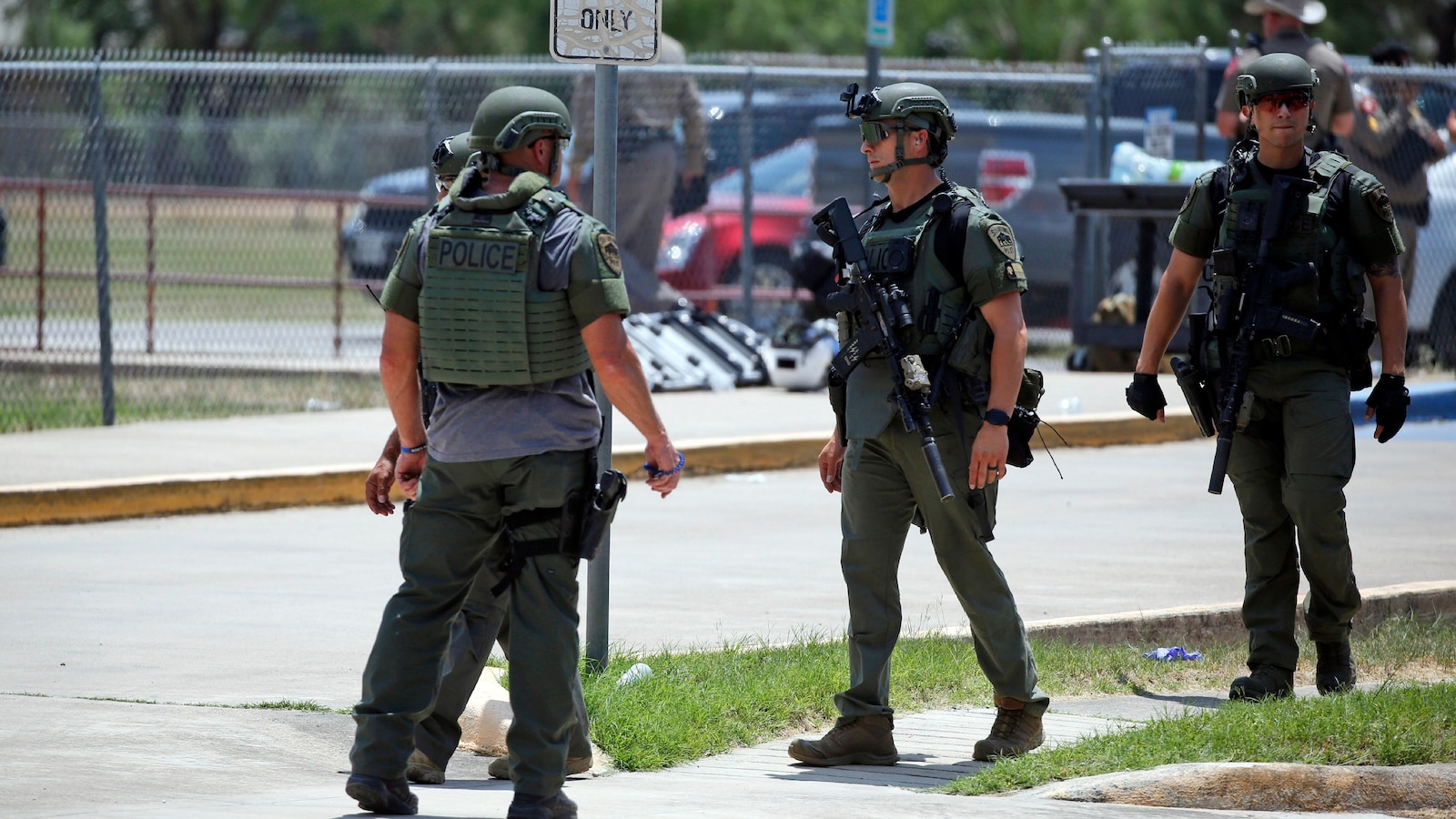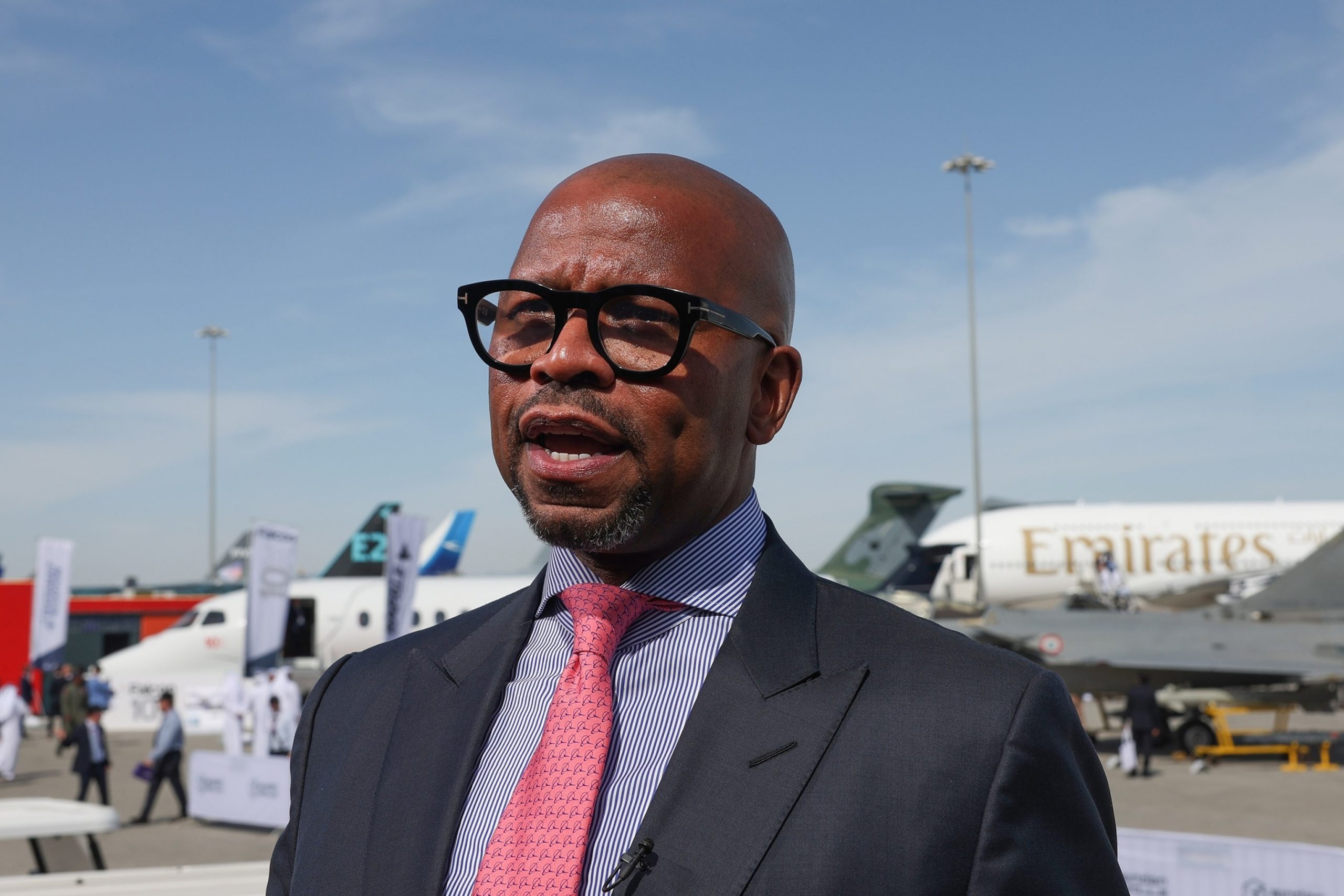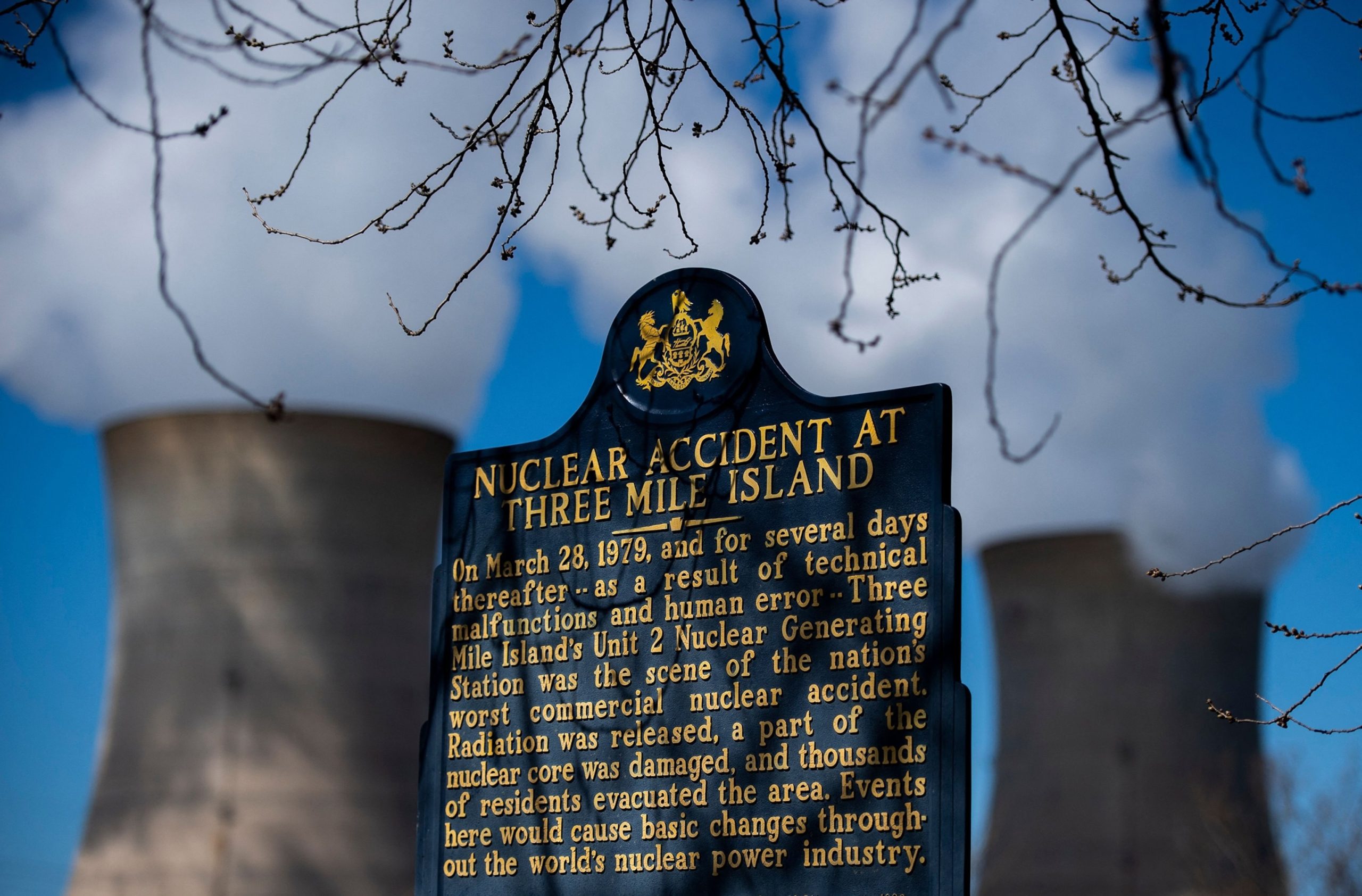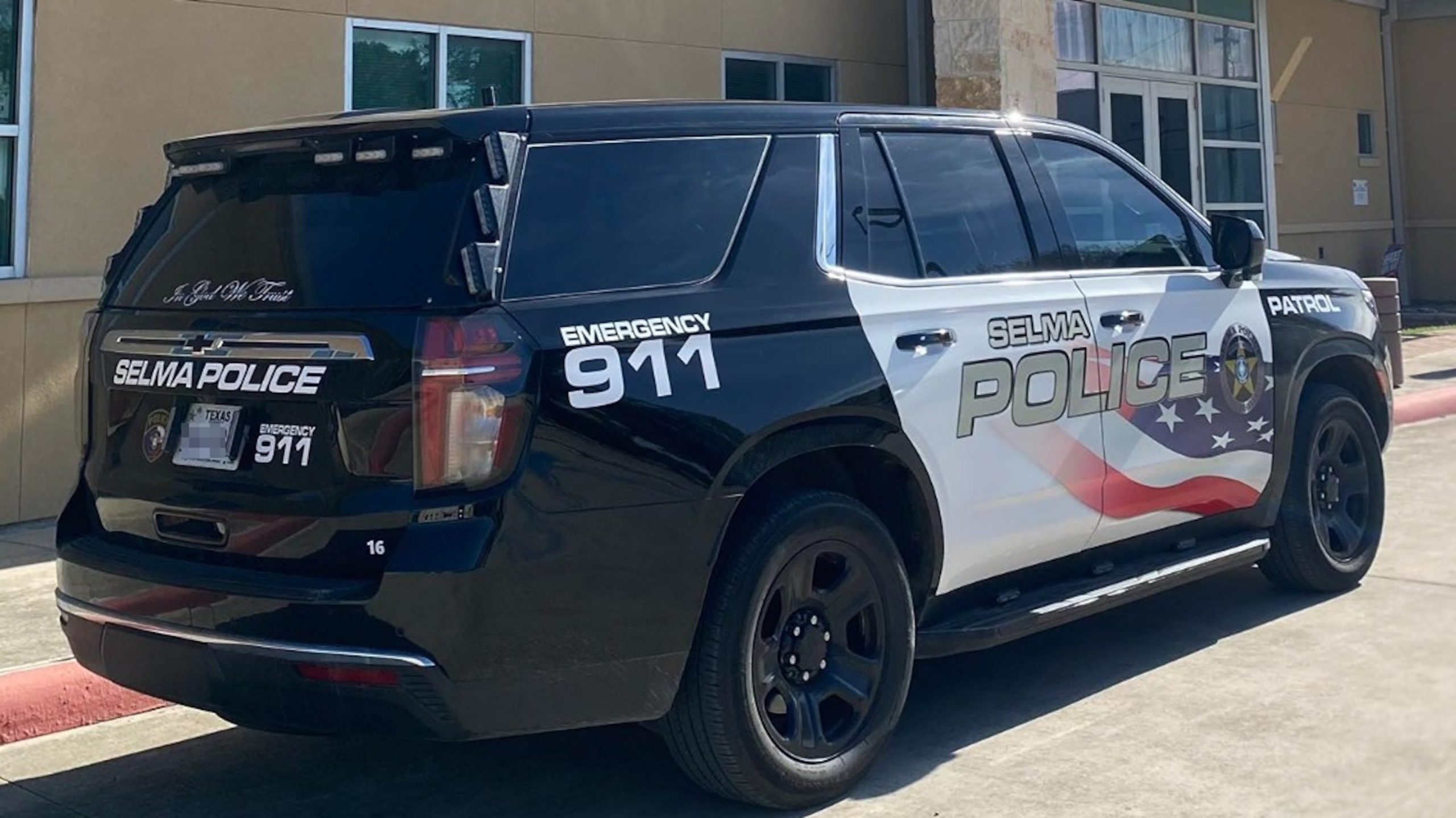
DALLAS — The uncle of the Uvalde, Texas, school shooter who killed 19 students and two teachers begged police to let him try to talk his nephew down, according to a 911 call included in a massive trove of audio and video recordings released by city officials Saturday.
The records connected to the May 2022 shooting at Robb Elementary School were released by Uvalde officials after a prolonged legal fight. The Associated Press and other news organizations brought a lawsuit after the officials initially refused to publicly release the information.
“Maybe he could listen to me because he does listen to me, everything I tell him he does listen to me,” the man, who identified himself as Armando Ramos, said on the 911 call. “Maybe he could stand down or do something to turn himself in,” Ramos said, his voice cracking.
The caller told the dispatcher that the shooter, identified as 18-year-old Salvador Ramos, was with him at his house the night before. He said his nephew stayed with him in his bedroom all night, and told him that he was upset because his grandmother was “bugging” him.
“Oh my god, please, please, don’t do nothing stupid,” the man says on the call. “I think he’s shooting kids.”
The call came in about 1 p.m. on May 24, 2022, about 10 minutes after the shooting had stopped. Salvador Ramos was fatally shot by authorities at 12:50 p.m. He had entered the school at 11:33 a.m., officials said.
The delayed law enforcement response — nearly 400 officers waited more than 70 minutes before confronting the gunman in a classroom filled with dead and wounded children and teachers — has been widely condemned as a massive failure. The Uvalde massacre was one of the worst school shootings in U.S. history.
Just before arriving at the school, Salvador Ramos shot and wounded his grandmother at her home. He then took a pickup from the home and drove to the school.
A frantic woman called 911 at 11:29 a.m., just before the shooting began, to tell a dispatcher that a pickup had crashed into a ditch and that the occupant had run onto the school campus.
“Oh my God, they have a gun,” she said, telling the dispatcher that shots were fired.
“Oh my God, I think there was kids at PE area,” she said. “Please hurry!”
At 1:19 p.m., another relative of Salvador Ramos called 911, scared that he might head her way next.
“Can you please bring somebody to my house?” Kesley Ramos asked the dispatcher. “The active shooter, he’s my cousin and I don’t want him to come to my house.”
Multiple federal and state investigations into the slow law enforcement response laid bare cascading problems in training, communication, leadership and technology, and questioned whether officers prioritized their own lives over those of children and teachers in the South Texas city of about 15,000 people 80 miles (130 kilometers) west of San Antonio. Families of the victims have long sought accountability for the slow police response.
Two of the responding officers now face criminal charges: Former Uvalde school Police Chief Pete Arredondo and former school officer Adrian Gonzales have pleaded not guilty to multiple charges of child abandonment and endangerment. A Texas state trooper in Uvalde who had been suspended was reinstated to his job earlier this month.
Some of the families have called for more officers to be charged and filed federal and state lawsuits against law enforcement, social media, online gaming companies, and the gun manufacturer that made the rifle the gunman used.
The police response included nearly 150 U.S. Border Patrol agents and 91 state police officials, as well as school and city police. While dozens of officers stood in the hallway trying to figure out what to do, students inside the classroom called 911 on cellphones, begging for help, and desperate parents who had gathered outside the building pleaded with officers to go in. A tactical team eventually entered the classroom and killed the shooter.
Previously released video from school cameras showed police officers, some armed with rifles and bulletproof shields, waiting in the hallway.
A report commissioned by the city, however, defended the actions of local police, saying officers showed “immeasurable strength” and “level-headed thinking” as they faced fire from the shooter and refrained from firing into a darkened classroom.
In a shocking turn of events, videos and 911 calls from the Uvalde school massacre have been made public following a lengthy legal battle. The release of this footage has shed new light on the tragic events that unfolded on that fateful day, leaving many questioning the response of law enforcement and school officials.
The Uvalde school massacre took place on May 18, 2021, when a lone gunman opened fire at Uvalde High School in Texas, killing 10 students and injuring several others before taking his own life. The incident sent shockwaves through the community and sparked a nationwide debate on gun control and school safety.
For months, the families of the victims and the media have been fighting for the release of the videos and 911 calls from that day, hoping to gain a better understanding of what happened and why. After a lengthy legal battle, a judge finally ruled in favor of releasing the footage, citing the public’s right to know.
The videos show the chaos and confusion that ensued as students and teachers tried to flee the gunman. In one particularly harrowing clip, a teacher can be seen barricading her classroom door as gunshots ring out in the hallway. The 911 calls reveal the desperation and fear in the voices of those who called for help, pleading for assistance as the tragedy unfolded.
The release of this footage has sparked renewed calls for stricter gun control measures and improved school safety protocols. Many are questioning why it took so long for law enforcement to respond to the scene and why more wasn’t done to prevent such a tragedy from occurring in the first place.
In response to the release of the videos and 911 calls, Uvalde High School has announced plans to implement new safety measures, including increased security presence on campus and active shooter drills for students and staff. The school also plans to provide counseling and support services for those affected by the massacre.
As the community continues to heal from the trauma of that day, the release of this footage serves as a stark reminder of the need for greater vigilance and preparedness in the face of such senseless violence. It is hoped that by learning from the mistakes of the past, we can work towards preventing similar tragedies from happening in the future.


